
Best Dongguan Hotels
Enter your dates for prices and availability of the best hotels in Dongguan.
Swipe up to view more
Filter by:
Hotel Star Rating
≤2345
Guest Rating
9+8+7+6+4895 Best Hotels to Stay in Dongguan
Select your travel dates for best hotels in Dongguan, featured by Trip.com based on guests reviews!
Most Booked
Lowest Price
Closest to Downtown
Highest Rated
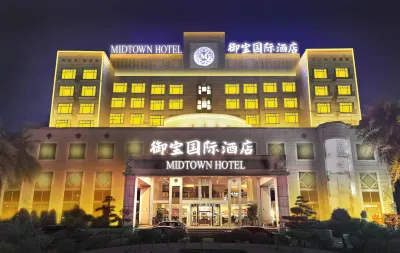
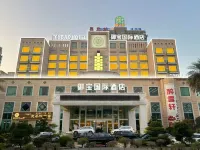

69
Hotel near Huangjiang Town,Dongguan
"Very satisfied 👍 In the central city area, the surrounding dining, leisure and entertainment facilities are complete, the environment is clean, the waiter is friendly, and check-out can also be before 2 pm. It is quite reasonable and considerate. A very good accommodation experience"
383 reviews
8.9/10
1 night
From AED 93
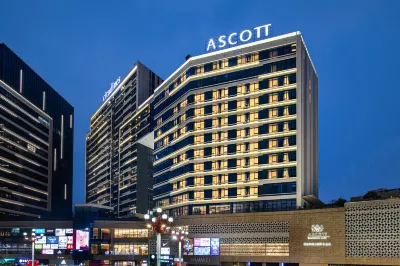
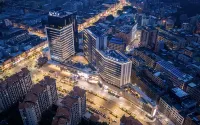

68
Hotel near Songshan Lake Resort,Dongguan
"The hotel is near the lake, which makes its location ok if you are willing to visit it. If you would go to the downtown, then the location is terrible because it takes an hour to arrive by car. Around the hotel there’s not much.
The room is nice with planty of amenities (kitchenware, washing machine, etc.) but not super clean (found hair in the bathtub).
Breakfast is not up to the standards and it’s quite poor.
Swimming pool is okish, nothing fancy and not very deep (just 1.2m). The guy working there staring at you all the time is not pleasant too.
Would I come back?
I guess not."
Very Good
575 reviews
9.2/10
1 night
From AED 312
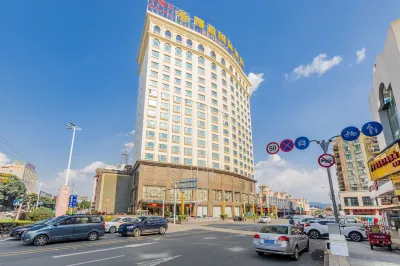
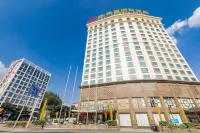
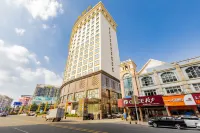
99+
Hotel near Yinxian Mountain Resort,Dongguan
"The hotel environment is already very familiar. I often stay here. The front desk service is good, the lobby looks very grand, and the room is spacious. I like the refreshments here, which are economical and affordable!"
Good
434 reviews
9.1/10
1 night
From AED 78

You Might Like
Dongguan Hotels With BreakfastDongguan Hotels With Twin RoomDongguan Hotels With 1 Double BedDongguan Hotels With Swimming PoolDongguan Hotels With Free Cancellation
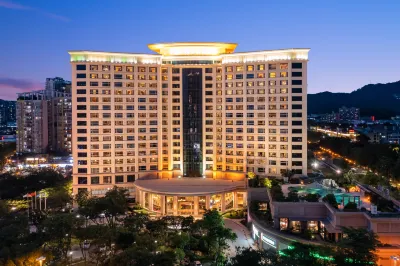
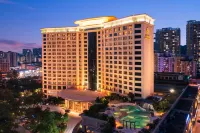

64
Hotel near Changan Wanda business district,Dongguan
"Easily one of the nicest hotels I've stayed in, 5-star all the way. The location was perfect, walkable to my meetings. Plus, there is a nice coffee shop and amazing Japanese restaurant within a 3-4 min walk from the hotel."
Good
517 reviews
9.0/10
1 night
From AED 269
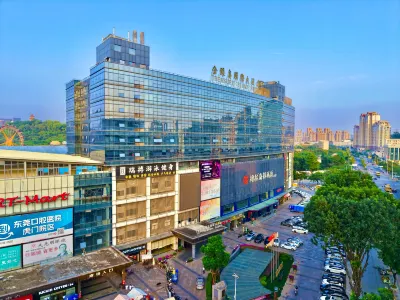

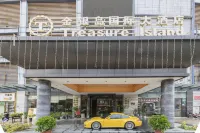
88
Hotel near Humen Railway Station/Humen Wanda,Dongguan
"Treasure Island Hotel is great value for the money that you will pay, it's cheap and very convenient. This hotel's not far away from Humen train station and popular attractions such as The Opium War Museum. It's worth staying for one or two nights. The reception staff is very pleasant and friendly. In the hotel there were not some other amenities, the gym was closed. About the restaurant, they provide totally fine food for breakfast. So, I recommend for everyone to come and enjoy here."
Good
469 reviews
9.1/10
1 night
From AED 122
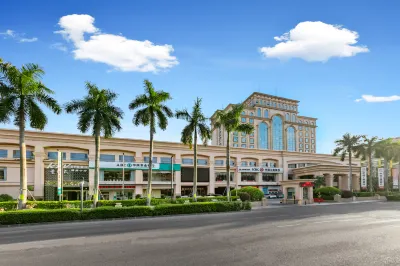
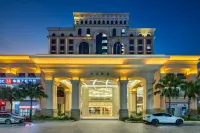
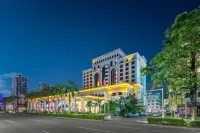
96
Hotel near Xiegang Town,Dongguan
"We booked a [Standard King Room · 1 room x 1 night] this time. As usual, the staff were polite, checked in quickly, and provided drinks and a pack of biscuits.
As for the room, it was clean, spacious and well equipped. There are many restaurants near downstairs, and the more delicious restaurants there are as the night goes on.
The only thing about this stay is that the downstairs is very noisy at night for some reason...
It was still very noisy after 12 o'clock in the evening. I didn't know what the people downstairs were shouting about. This never happened when I stayed there normally!"
Very Good
413 reviews
9.3/10
1 night
From AED 88
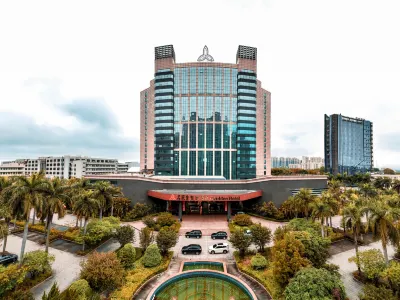
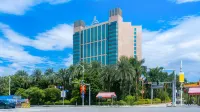
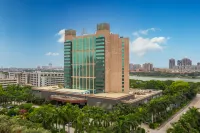
99+
Hotel near Dongguan railway station business district,Dongguan
"Facilities: There is a large outdoor swimming pool and a restaurant. It's a pity that it is really old. . . The stopper in the bathtub is peeling off its metallic paint. . The sound of water pipes can also be heard from the wall at night. . . Dim lights. .
Service: All the waiters are very friendly! Software is much better than hardware. . . The hotel's public toilets are also quite clean.
Environment: The neighborhood is basically a place with little to offer. It's not too far off to say the least. It takes less than 10 minutes to reach the high-speed rail station and 5 minutes to the supermarket. The bus stop is right at the door."
Good
127 reviews
9.1/10
1 night
From AED 134
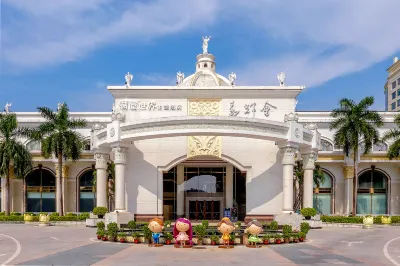
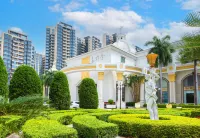

99+
Hotel near Longfeng Mountain Resort,Dongguan
"I booked two rooms at once and the room was the most satisfying I have ever stayed in. It was more beautiful than several five-star hotels I have stayed in before. The bathroom is very large and the hotel layout is very warm. It's just that the mattress is a little soft. The hotel's buffet food is also good, and it's an experience with good value for money👍. I've already recommended it to my friends🥳🥳🥳"
Outstanding
227 reviews
9.5/10
1 night
From AED 229
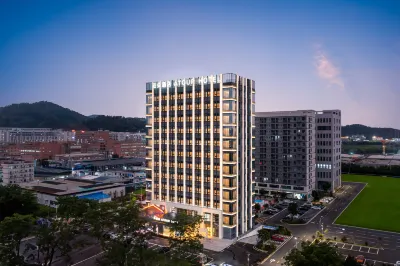


77
Hotel near Huangjiang Town,Dongguan
"Atour Hotel is very good, the hotel breakfast is rich, the room is very clean and odorless, the sound insulation of the room is also very good, there are books to read in the lobby, the pillows in the hotel room are recommended, and the front desk staff is very good."
Perfect
257 reviews
9.8/10
1 night
From AED 161
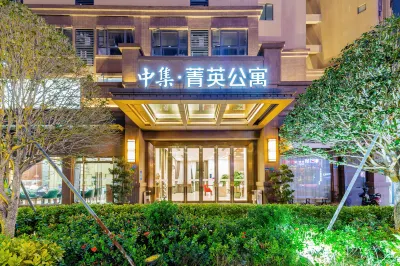
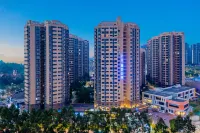
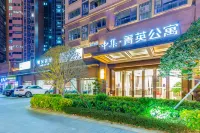
99+
Hotel near Songshan Lake Resort,Dongguan
"It is clean and hygienic. It is very comfortable to look out of the window. It is not depressing to see the distant view. There are also warm drinks in winter. Every time I come to Songshan Lake for business trip, I will stay in this hotel. The big brands are guaranteed in terms of sanitation and service"
Excellent
279 reviews
9.6/10
1 night
From AED 113

Top 20 Premium-Hotels in Dongguan
See all
Discover our curated selection of premium hotels in Dongguan for your next stay

No.
1
9.5/10
1648 reviewBanyan Tree Dongguan Songshan Lake
Hotel near Dalang Town, Dongguan
"Great design""Great for kids"
Select dates to view prices
No.
2
9.6/10
6200 reviewTangxia Goodview Hot Spring Hotel
Hotel near Tangxia Town, Dongguan
"Great for kids""Relaxing hot springs"
Select dates to view prices
No.
3
9.5/10
4173 reviewInterContinental Dongguan
Hotel near International Trade Center Business District, Dongguan
"Delicious breakfast""Friendly front desk staff"
Select dates to view prices
No.
4
9.6/10
2352 reviewYingbin Hotel
Hotel near Nancheng Subdistrict, Dongguan
"Classy environment""Friendly front desk staff"
Select dates to view prices
No.
5
9.7/10
2976 reviewKande International Hotel
Hotel near International Trade Center Business District, Dongguan
"Delicious breakfast""Friendly front desk staff"
Select dates to view prices
No.
6
9.1/10
1525 reviewHyatt Regency Dongguan
Hotel near Songshan Lake Resort, Dongguan
"Great for kids""Great swimming pool"
Select dates to view prices
No.
7
9.6/10
2301 reviewDongcheng International Hotel
Hotel near Wanda Business District of Dongcheng, Dongguan
"Friendly front desk staff""Convenient parking"
Select dates to view prices
No.
8
9.5/10
160 reviewLong Island Golf & Private Resort Hotel
Hotel near Chang'an Town, Dongguan
"Classy environment""Friendly front desk staff"
Select dates to view prices
No.
9
9.3/10
792 reviewMission Hills Resort Dongguan
Hotel near Tangxia Town, Dongguan
"Great for kids""Has facilities for children"
Select dates to view prices
No.
10
9.8/10
5915 reviewDeRUCCI Hotel (DongGuan BinJiang Stadium Station)
Hotel near Keyuan Garden, Dongguan
"Friendly front desk staff""Classy environment"
Select dates to view prices
No.
11
9.5/10
1426 reviewDongguan Marriott Hotel
Hotel near International Trade Center Business District, Dongguan
"Classy environment""Friendly front desk staff"
Select dates to view prices
No.
12
9.7/10
1201 reviewRamada Plaza by Wyndham Dongguan Songshan Lake
Hotel near Songshan Lake Resort, Dongguan
"Friendly front desk staff""Delicious breakfast"
Select dates to view prices
No.
13
9.5/10
2228 reviewWanda Vista Dongguan
Hotel near Wanda Business District of Dongcheng, Dongguan
"Friendly front desk staff""Delicious breakfast"
Select dates to view prices
No.
14
9.6/10
2070 reviewHJ International Hotel
Hotel near Houjie Wanda business district, Dongguan
"Friendly front desk staff""Large rooms"
Select dates to view prices
No.
15
9.5/10
2310 reviewRoyal Garden Hotel
Hotel near Songshan Lake Resort, Dongguan
"Friendly front desk staff""Delicious breakfast"
Select dates to view prices
No.
16
9.7/10
931 reviewGRAND REZEN HOTEL CASTFAST DONG GUAN
Hotel near Longfeng Mountain Resort, Dongguan
"Great for kids""Large rooms"
Select dates to view prices
No.
17
9.6/10
2703 reviewDeRUCCI Hotel (Dongguan International Exhibition Center)
Hotel near Houjie Exhibition Center Business District, Dongguan
"Great rooms""Friendly front desk staff"
Select dates to view prices
No.
18
9.6/10
2004 reviewRegal Palace Hotel
Hotel near Houjie Exhibition Center Business District, Dongguan
"Friendly front desk staff""Delicious breakfast"
Select dates to view prices
No.
19
9.2/10
564 reviewSheraton Hotel Dongguan
Hotel near Houjie Wanda business district, Dongguan
"Friendly front desk staff""Delicious breakfast"
Select dates to view prices
No.
20
9.2/10
575 reviewAscott Songshan Lake Dongguan
Hotel near Songshan Lake Resort, Dongguan
"Friendly front desk staff""Large rooms"
Select dates to view pricesWhat Travelers Said About the Best Hotels in Dongguan
See all
Browse these genuine traveler ratings and real guest reviews to find the best Dongguan hotels.
9.6/10
Excellent
CChongqidaxiaThis stay was a perfect experience. The room layout is exquisite and reasonable, the facilities are new and complete, and the bedding is soft and comfortable, allowing me to have a good night's sleep. The service staff are warm and considerate. From the thoughtful guidance when checking in to the response to needs during the stay, they are extremely efficient. The hotel restaurant has rich and delicious dishes and a variety of breakfast options. The location is superior, the transportation is convenient, and the surrounding facilities are complete. Highly recommended to friends traveling for business and vacation, you will definitely be satisfied!
Orange Hotel (Dongguan Xiping Subway Station Hotel)
Hotel near International Trade Center Business District, Dongguan 15.4% of visitors choose this area
Price per night from:AED 174
9.5/10
Outstanding
HHyouwaThe room I booked was an executive suite. It was large. It had two large rooms, a large bathroom and a walk in closet and a separate toilet. The decor is a little dated. But this did not make it feel any less grand. The previous hotel was more modern but this room is grander in scale.
the bedroom had a panoramic view of the city. We were on the 15th floor. The elevator was fast and would get you from 1 to 15 in 20 seconds.
The bathtub could be enjoyed in the dark with the blinds lifted something I took advantage of each day.
The toilets are not smart which I got used to in my previous hotel. But they did the job.
The shower had good water pressure, the rainfall shower was installed into the ceiling and it had great intensity.
The shampo, conditioner and gel were great and the toothpaste was Colgate.
There were some amenities listed but we're not available during our stay such as the executive lounges and bars, but the staff explained all the benefits could be enjoyed in the dining hall. There is a onsite pool, gym and sauna on the 5th floor along with a spa. I did not get to try the pool as I had no swim wear. But you could rent if you wanted.
The buffet breakfast and dinner was all very good with a lot of options. The freshly cooked noodle and grill station were amazing. I would recommend arriving when it starts or an hour into service as sometimes they begin to pack up before the service is closed.
Drinks were unlimited and so was the self serve gelato, which I frequented
The room was non-smoking and free from smells as requested which is a plus and I am thankful for, as this could ruin the experience for me and my pregnant partner.
The staff were all very welcoming and would greet us every day. Amenities and towels were replenished
The interior of the hall was grand the dining hall was decorated, high ceilings and lots of lights secured behind a safety net.
Dongguan I did not get to see much of. But it's a city that is in the midst of development with new metros being planned and in the midst of being built. I am excited to see how it changes.
Our stay was short but it is indeed one of our most memorable hotels. One due to the size and grandeur of the room and the second was the service provided.
Wanda Vista Dongguan
Hotel near Wanda Business District of Dongcheng, Dongguan 2.6% of visitors choose this area
Price per night from:AED 293
9.5/10
Outstanding
GGuest UserI had a great view of my room facing the mountain (free upgrade too!). Service was excellent. Food was quite okay, but would be better if there was a egg station at the breakfast buffet where we could ask for scrambled or fried eggs. It was a shame I was only hear for a night, will be back!
Dongguan Marriott Hotel
Hotel near International Trade Center Business District, Dongguan 15.4% of visitors choose this area
Price per night from:AED 358
9.5/10
Outstanding
GGuest UserFirst class hotel faculties with excellent services making our overnight stay extremely comfortable and enjoyable and would recommend to anyone who seek for the best hotel, intercontinental is the one.
There is a lady Mia who offers cares and services in every details which worth mention.
InterContinental Dongguan
Hotel near International Trade Center Business District, Dongguan 15.4% of visitors choose this area
Price per night from:AED 385
9.5/10
Outstanding
DDenzil Jr.⭐⭐⭐⭐⭐
I recently had the pleasure of staying at the Royal Garden Hotel with my family, and I can't say enough good things about our experience. From the moment we arrived, we were greeted with a warm, welcoming atmosphere that made us feel right at home.
The rooms were impeccably clean and well-maintained, providing a comfortable retreat after our daily adventures. It was clear that the hotel prioritizes cleanliness and guest comfort, which is always a plus for families.
One of the highlights of our stay was the fantastic swimming pool. It was the perfect spot for us to relax and unwind, with enough space for everyone to enjoy. My family absolutely loved it, and we spent many joyful afternoons splashing around together.
The location of the Royal Garden Hotel is another significant advantage. It's easily accessible, making it convenient for exploring nearby attractions and getting around the area without any hassle.
Overall, my family had a wonderful time, and we truly enjoyed every aspect of our stay. We are already planning our return visit and will definitely be recommending the Royal Garden Hotel to our friends and family. If you're looking for a relaxing getaway that caters to families, this hotel is the perfect choice!
Royal Garden Hotel
Hotel near Songshan Lake Resort, Dongguan 3.5% of visitors choose this area
Price per night from:AED 261
9.4/10
Outstanding
JJackThe hotel is conveniently located, very clean, including modern amenities, and the staff were very friendly and helpful. The breakfast was also very tasty and varied.
Ibis Hotel (Dongguan Qifeng Park Subway Station)
Hotel near International Trade Center Business District, Dongguan 15.4% of visitors choose this area
Price per night from:AED 102
9.4/10
Outstanding
GGuest UserWe usually go to the Babylon hotel, which is just across the street. As first time in this hotel, we can compare. In Kagas, you will get the best view here and the comfort of the bed is real.
The quality of the slippers feels like linen, they are very comfy. They can provide extra products/services for free (conditioner, hair tie, face tissue, pads for ladies, bathroom slippers and more..) this is truly appreciated. They take care of cleaning your clothes for free. The biggest inconvenience the smell.. advertised as non smoking, but it is not. You will smell smoke, specially if you choose an executive suite... No fridge. the worst is the smell in the bathroom, this is really disgusting.. :( I wish they just provided true information about this. Unfortunately the room designated for mahjong is really damaged, you can really see that carpet, chairs and sofa are degraded, because of this first look in the room feels very cheap. Another downfall is that even if you close all windows you will hear the circulation sound, they honk a lot so you don't have a quiet environment. Very few choices and dishes for breakfast, on this matter, Babylon wins, they provide more diverse and tasteful foods. to finish in positive note, in the hall of kagas, you have a fridge where you can get fresh bottles of water, in the evening there are bowls of porridge, it's self service. staff is helpful and very fast to help.
Kajiasi Hotel (Dongguan Chang'an RT-Mart)
Hotel near Changan Wanda business district, Dongguan 1.1% of visitors choose this area
Price per night from:AED 100
9.2/10
Very Good
GGuest UserI had an exceptional stay at this hotel! The place was absolutely exquisite and impeccably clean. From the moment I arrived, I noticed the soothing music playing throughout the hotel, creating a calm and relaxing atmosphere. The entire hotel also smelled wonderful, which added to the overall pleasant experience.Although I don't speak Chinese and the staff didn't speak English, they were incredibly kind and went out of their way to assist me. They helped me navigate various things, like arranging taxis and giving me suggestions on where to go. Their willingness to help despite the language barrier was truly impressive.The breakfast was plentiful and delicious, offering a wide variety of options. Most importantly, the room was spotless, which is something I value greatly. I highly recommend this hotel for anyone looking for a peaceful, clean, and friendly place to stay.
我在这家酒店的入住体验非常棒!酒店非常精致,干净整洁。从我到达的那一刻起,我就注意到酒店内播放的舒缓音乐,营造了宁静和放松的氛围。整个酒店的香味也非常宜人,让人感觉十分舒适。虽然我不会说中文,酒店的工作人员也不会说英语,但他们非常友好,尽全力帮助我。他们帮助我打车,还给我提供了各种建议。尽管存在语言障碍,他们的热情和帮助让我印象深刻。早餐种类丰富,非常美味。最重要的是,房间非常干净,这对我来说非常重要。我强烈推荐这家酒店,适合任何寻求安静、干净和友好环境的人入住。
Atour Hotel (Dongguan Humen Avenue)
Hotel near Humen Railway Station/Humen Wanda, Dongguan 40.7% of visitors choose this area
Price per night from:AED 194
9.1/10
Good
IIrfan 一帆The Hyatt Regency Dongguan offers a very comfortable and relaxing stay, and the staff’s ability to communicate in English was a big plus, making everything more convenient.
I particularly enjoyed having breakfast outdoors while watching the sunrise—it was such a serene and memorable experience. The staff went out of their way to accommodate this request, which I truly appreciated. The breakfast itself was decent, with a nice variety to start the day on a positive note.
However, one downside was that no one assisted me with my luggage. My room was quite far from the main reception, and dragging my suitcase all the way across the carpeted floors was a bit frustrating.
Despite this, the property’s design and ambiance were wonderful, offering a peaceful and quiet getaway. With a little extra attention to guest assistance, this could be an even better experience.
Hyatt Regency Dongguan
Hotel near Songshan Lake Resort, Dongguan 3.5% of visitors choose this area
Price per night from:AED 369
8.9/10
EElenaThe hotel looks beautiful, renovated, nicely decorated and facilitated. The furniture is very decent, according to the classic style of the hotel. The cleaning service is extraordinary.The breakfast provided could be more assorted and decent. Gym is pretty old, however it's convenient. The steam room and the sauna are too small, could be arranged better. The communication with the staff in English is very problematic, but electronic dictionaries saved us many times. Overall we were very satisfied with the hotel and will be back if we have still things to do with at Dongguan.
Grand Noble Hotel
Hotel near Humen Railway Station/Humen Wanda, Dongguan 40.7% of visitors choose this area
Price per night from:AED 183
FAQs About Dongguan Hotels
What are the best hotels in Dongguan?
Whether you're planning a business trip or a vacation, Dongguan has many top-rated hotels to choose from. Huihua International Hotel, Tangxia Goodview Hot Spring Hotel and Kande International Hotel are among the best choices for your stay.
How much is a hotel in Dongguan on average?
The average price for hotels in Dongguan is AED 92 on weekdays, and AED 94 on weekends (Friday-Saturday).
What are the best hotel deals in Dongguan?
Find the best hotel deals and promotions on Trip.com, available year-round for both first-time and loyal users. Please check the promotions page to see what promotions are available now on Trip.com.
What are the best pet-friendly hotels in Dongguan?
Lavande Hotel (Dongguan City Government International Trade Store), Dongguan Tangxia Town South Railway Station Jinjiang Metropolo Hotel and Ramada Encore Hotel (Changan) welcome pets. Bring your pets along for an enjoyable stay!
What are the best hotels with a spa in Dongguan?
A spa hotel can make your trip more enjoyable with relaxing amenities. Tangxia Goodview Hot Spring Hotel, Dongcheng International Hotel and Royal Garden Hotel are great choices for spa hotels offering quality services.
Which hotels in Dongguan are good for couples?
When choosing hotels in Dongguan, many couples prefer staying at Tangxia Goodview Hot Spring Hotel, Hyatt Regency Dongguan and Mission Hills Resort Dongguan.
What are the best luxury hotels in Dongguan?
In Dongguan, you’ll find a range of luxury hotels known for their unique designs, premium amenities, and outstanding experiences. Tangxia Goodview Hot Spring Hotel, Kande International Hotel and GRAND REZEN HOTEL CASTFAST DONG GUAN are excellent luxury hotels offering outstanding experiences.
What are the best family-friendly hotels in Dongguan?
Tangxia Goodview Hot Spring Hotel, Kande International Hotel and Kamston International Hotel are great options for families traveling together. Create lasting memories with your kids and loved ones during your stay.
Which hotels in Dongguan provide fitness facilities?
Huihua International Hotel, Tangxia Goodview Hot Spring Hotel and Kande International Hotel include fitness facilities, so you can maintain your routine while traveling. Stay on track with your fitness goals while on the go!
Which hotels in Dongguan have pools?
Huihua International Hotel, Tangxia Goodview Hot Spring Hotel and Kande International Hotel are excellent options for hotels with swimming pools. Book your stay to enjoy the pool and make your trip more enjoyable.
Which hotels in Dongguan have the best breakfast?
Begin your day with a tasty and satisfying breakfast! Tangxia Goodview Hot Spring Hotel, Kande International Hotel and GRAND REZEN HOTEL CASTFAST DONG GUAN provide the best breakfast to start your day.
What are the best hot spring hotels in Dongguan?
Hotels with hot springs provide a perfect way to relax and recharge during your stay. Tangxia Goodview Hot Spring Hotel, Richwood Garden Hotel and Silverworld Hotels & Resorts include hot springs for a truly relaxing experience.
Dongguan Hotels Info
| Highest Price | AED 410 |
|---|---|
| Lowest Price | AED 35 |
| Number of Reviews | 786,652 |
| Total Properties | 4895 |
| Average Price(Weekday Night) | AED 92 |
| Average Price(Weekend Night) | AED 94 |
Keep Exploring Dongguan
Most Viewed Dongguan Hotels
Kande International HotelHuihua International HotelHampton By Hilton Dongguan DalangGrand Noble HotelDeRUCCI Hotel (DongGuan BinJiang Stadium Station)Country Inn & Suites by Radisson,Dongguan Wanjiang Shimei Tea Market HotelFive Seasons Hotel (Dongguan Dongcheng Metro Station Wanda Plaza)Tuqu Shangpin HotelHampton by Hilton Dongguan Central SquareRamada Encore Hotel (Dongguan Dongcheng Wanda Plaza)